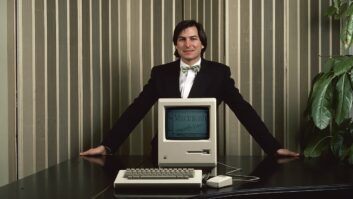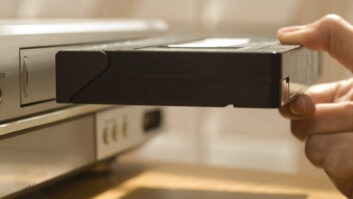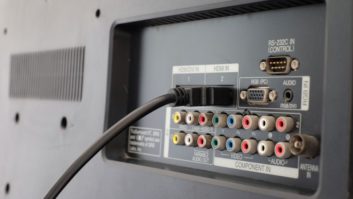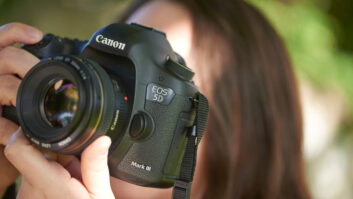
This year marks the 100th anniversary of the founding of the CTA (Consumer Technology Association), which started out as the RMA (Radio Manufacturers Association). This is the fifth in a series of essays exploring and celebrating CTA’s and our industry’s first century of invention, innovation, and entrepreneurship, assembled from varying technology historical research and writings I have done over the course of 20-plus years, including from an annually updated industry history for CTA’s now-defunct Digital America, 20-plus years of CTA Hall of Fame inductee biographies, and numerous tech history articles for a variety of publications over the years.
Here are the previous chapters:
- Part 1 (1924-1929): Founding
- Herbert H. Frost: CTA’s “George Washington”
- Part 2 (1930-1945): David Sarnoff
- Part 3 (1946-1960): The TV Age
- Part 4 (1961-1974): The Sixties
- Jack Wayman, Our Industry’s Indispensable Exec
- Part 5a (1975-1985): Decade of Disruption – Home Video
- Part 5b (1975-1985): Decade of Disruption – Personal Audio
- Part 5c (1975-1985): Decade of Disruption – Personal Computing
- Part 5d (1975-1985): A Decade of Disruption – 1984 Phones It In
Thick Irony
While the courts and regulatory agencies were enabling the creation of new phone businesses in 1984 (see part 5d), they were also shaping the new home video business.
In the late summer of 1983, I attended a Fox Home Video launch party for the VHS release of Pride of the Yankees, the Lou Gehrig biopic starring decidedly bad baseball actor Gary Cooper, held at some fancy midtown Manhattan hotel.
I remember this event for two reasons. First, it was the last time I got drunk.
Second, it was a launch party at some fancy midtown Manhattan hotel celebrating the videotape release of a movie. An expensive hotel party. For one video release.
You see, by the early 1980s, Hollywood had discovered “gold in them there” tapes and was unapologetically exploiting the rich vein of their catalog content as money-grubbing opportunistic Hollywood is prone to do.
Except, Hollywood’s sudden love of the VCR was insanely ironic. As I noted in Part 5a, on November 11, 1976, almost simultaneous with the Sony Betamax going on sale in the U.S., Hollywood Inc. sued. Officially Sony Corp. of America v. Universal City Studios, Inc., 464 U.S. 417, the suit, which also named VCR consumer William Griffiths as a defendant, claimed that consumers recording TV shows was copyright infringement. Sony countered that home recording constituted “fair use.”
In other words, while studios were holding expensive press parties to launch expensive new video titles, they also were seeking relief from the U.S. Supreme Court from the makers of the device that was making them newly found millions.
Apparently, not enough millions.

I don’t consider myself a believer in vast conspiracies, but the very real fears of VCR makers that they’d lose the Sony suit may explain why programming a VCR for time shifting was so stupidly difficult, additionally ironic since the VCR was initially marketed as a TV program recording device. First, you had to figure out how to program the clock to time-shift so you weren’t simply resetting the time – if you could even figure that out. Most people didn’t even bother setting their VCR clocks, resulting in most VCR LED displays simply flashing “12:00” 24/7. There’s even a Wikipedia entry on this “blinking 12:00” phenomenon.
Even if you got the clock programming correct to the time shift, you had to remember to leave your TV on the station you planned to record before you left the house because there was no way the TV knew how to change the channel by itself. At the time, there was no such thing as an electronic program guide (EPG), which was years away. I can’t tell you how many times my roommate changed the channel when I wasn’t home and then didn’t change it back, despite ample warnings to the contrary.

You also had to remember to put a blank tape in the VCR. “I forgot to put a tape in!” was a familiar nerd lament at the time, if you could even locate a blank tape – who remembers taping over the broken record tab to reuse old tapes? You also had to remember to set the appropriate recording speed.
On Wednesday, October 15, 1986, I couldn’t be home to watch Game 6 of the Mets-Astros National League Championship Series, a day game being played in Houston’s Astrodome. So, I set my rented VCR (yes, just as the high price of movies on tape promoted the creation of the tape rental business, VCRs were so expensive you could rent one) to record the game. Because I hated the poor grainy quality of the 6-hour recording speed, I set my VCR to the compromise 4-hour speed, ample time for a normal nine-inning game.
Baseball fans, especially Met fans, know what happened. The game went 16 innings and lasted a thrilling 4 hours and 45 minutes. I missed the end of the game and the Mets winning the pennant.
The Lawyer
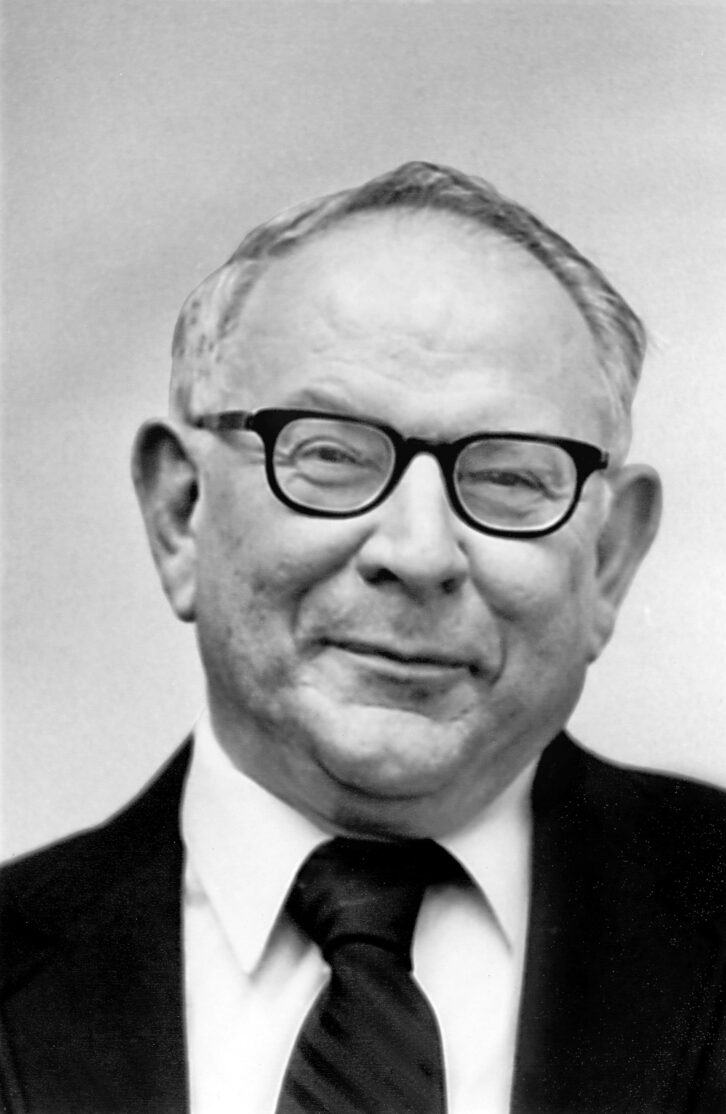
As Judge Greene considered the status of the home telephone business, as the FCC was deciding how the cellular business would be constructed, the federal courts were hearing arguments from Hollywood studios on why recording TV programs at home should be considered copyright infringement and not fair usage.
And it was two lawyers – Sony’s lead council, Dean Dunlavey, and Supreme Court Associate Justice John Paul Stevens, who essentially procured for us the right to record both video and, by extension, audio, at home, which has had far-reaching consequences in our industry.

Since he’s a Supreme Court Justice, you can find out a lot about Justice Stevens anywhere. But while Dean Dunlavey is a critical figure in our industry, he is largely unknown. Allow me to correct that.
Dunlavey might have been a lawyer, but he did have a science/tech background. He was born in Waterloo, Iowa, on Oct. 31, 1925. After a year at Iowa State University, he volunteered for the Army when WWII broke out, serving in the Philippines as an infantry captain.
After the war, Dunlavey earned a bachelor’s degree in chemistry in 1949 from Harvard on the GI Bill, then received a doctorate in nuclear chemistry from Berkeley in 1952. Even though he worked with Nobel Prize winner Glenn T. Seaborg at Berkeley on creating transuranic elements, Dunlavey felt stifled in the lab and discovered he yearned for a more confrontational profession.
Dunlavey stayed at Berkeley where he earned his law degree from Boult Hall, finishing first in his class in 1955. He served as editor-in-chief of the California Law Review and was made a member of the Order of the Coif. While teaching at Harvard Law School he simultaneously earned his master’s degree. He then joined the LA law firm of Gibson, Dunn & Crutcher in 1956. In 1970, he was named a fellow in the American College of Trial Lawyers.
Once Hollywood brought its suit against the VCR, Sony CEO Akia Morita chose Dunlavey as lead council. While Dunlavey admittedly lacked significant copyright experience, he had a track record as a hard-nosed litigator and a real-world, rather than a strict legal sense, of what “fair use” meant.
The Suit

The Sony case wound its way through several lower federal courts – for you IP lawyers out there, check out this thorough scholarly legal look at the case.
The first to hear the case in early 1979 was the Federal Central District of California in Hollywood’s LA backyard. After a five-week bench trial, Judge Warren Ferguson sided with Sony, agreeing that home video recording constituted fair use.
On October 19, 1981, by which time 4 million VCRs had been sold, the three-judge Ninth Circuit Court decided, 2-1, to overturn the lower court’s decision. Within a few weeks, the Hollywood plaintiffs added 42 other VCR makers to its suit. In March 1982, Sony appealed the Ninth Circuit’s decision to the U.S. Supreme Court.
 In between, amicus briefs flew from both sides. The MPAA (Motion Picture Association of America) – the movie ratings people – took up the Hollywood cause and lobbied Congress to simply ban the VCR. MPAA chief “Jack Valenti would bring out Clint Eastwood and other stars, and all the congressional staffers would hang from the rafters,” EIA CEG chief Jack Wayman remembered.
In between, amicus briefs flew from both sides. The MPAA (Motion Picture Association of America) – the movie ratings people – took up the Hollywood cause and lobbied Congress to simply ban the VCR. MPAA chief “Jack Valenti would bring out Clint Eastwood and other stars, and all the congressional staffers would hang from the rafters,” EIA CEG chief Jack Wayman remembered.
Wayman carried the industry fair use flag. “We built a grassroots consumer base… We brought in busloads of NARDA members to go into Congress and lobby against proposed MPAA legislation banning the VCR, with signs ‘Don’t take away my VCR!’ We’re just small manufacturers trying to satisfy the public.”
Dunlavey wielded the more potent legal cudgel. He orally argued the case before SCOTUS not once but twice in 1983, on January 18, and again on October 3. Both times, the down-to-earth Dunlavey contended that the studios were paid for selling their product to television networks and were not entitled to additional compensation if a consumer recorded them for personal viewing.
Hollywood’s home video golden goose appeared headed for the chopping block, however. Behind the scenes, SCOTUS was ready to rule for Hollywood on an initial 6-3 vote.
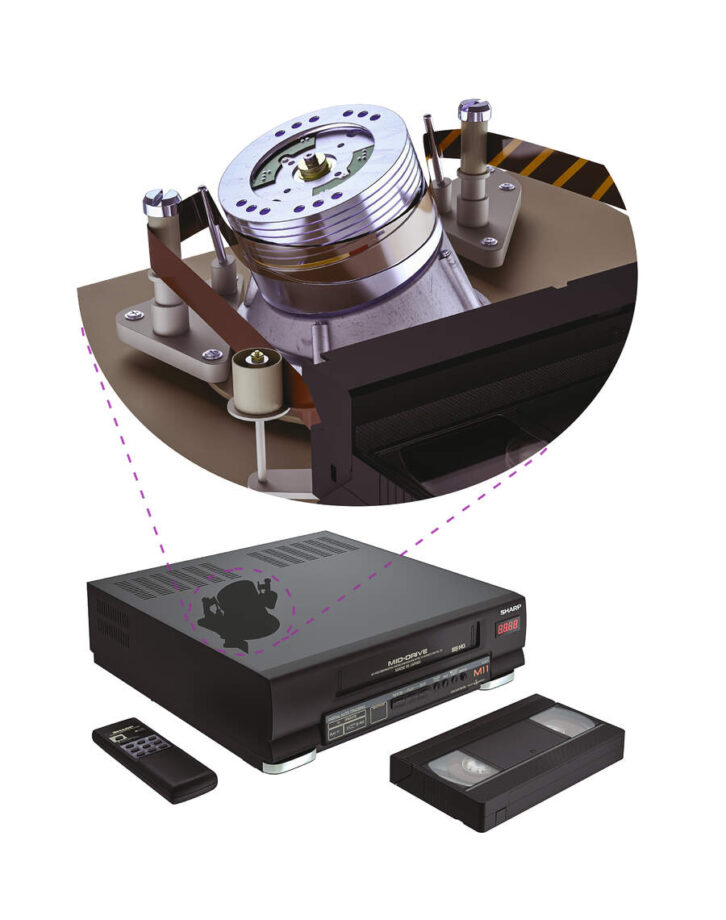 But Justice Stevens, a firm believer in Sony’s and Dunlavey’s fair use arguments, managed to convince Justices Sandra Day O’Connor and William J. Brennan to switch their votes.
But Justice Stevens, a firm believer in Sony’s and Dunlavey’s fair use arguments, managed to convince Justices Sandra Day O’Connor and William J. Brennan to switch their votes.
On January 17, 1984, less than three weeks after Judge Greene’s AT&T breakup became official, SCOTUS concluded 5-4 that VCRs were legal products and that home taping of copyrighted works fell under the “fair use” exception of copyright law. Writing for the majority, Justice Stevens concluded “[t]he sale of the VTR’s [sic] to the general public does not constitute contributory infringement of [Universal’s] copyrights.”
You can read more details about Justice Stevens’ backstage Sony SCOTUS heroics here.
A memo circulated at Gibson, Dunn & Crutcher after the decision noted it was “universally agreed by all Supreme Court watchers that Dean’s oral argument made all the difference.”

The Sony decision had a far-reaching impact beyond the VCR. The case prompted the creation of the Home Recording Rights Coalition, which fought for the already common practice of creating “mix tapes” from records to audio cassettes by both consumers and recording artists as memorialized in the book and film High Fidelity and led to the passage of the Audio Home Recording Act of 1992 (AHRA). The iPod and the digital music players in our phones as well as today’s DVRs would have never been developed or sold without the precedent of home recording “fair use” established by the Sony decision.
Whatever its impact on our industry, Dunlavey viewed the Sony suit as simply just another case. During his 34-year career, Dunlavey tried nearly 100 cases, including several before the U.S. Supreme Court. He later told a reporter “I have done nothing but litigation since the day I walked in the door here. I can’t think of a better way of making a living than fighting with people and getting paid for it.”
Dunlavey continued to represent Sony until he retired in 1990. He died in 2003.
By the time the Sony decision was handed down, public adoption of the VCR had grown too big for politicians or Hollywood to buck. Hundreds of mom-and-pop video rental and sales stores were popping up in every community in America. By 1985, there were 28,000 video rental outlets, and by 1987, 95 million U.S. homes contained a VCR. That year, just three years after the Sony decision, video rental income reached $5.25 billion, surpassing movie theater ticket sales for the first time. Today, movie studios regularly make more money on a film from physical and online home video sales, pay-per-view, and streaming than from the theatrical box office. Losing the Sony suit turned out to be the best outcome for Hollywood studios and the music recording industry.
Full Circle

We’ll end our examination of this fateful year where we started – January 1984. Three weeks after AT&T’s breakup became official, just five days after SCOTUS’ Sony decision, Washington faced the LA Raiders in Super Bowl XVIII in Tampa on Sunday, January 22, aired on CBS.
During the third quarter, a strange commercial appeared. Dour gray human drones marched in ominous lockstep as they entered an auditorium, intercut with a female runner wielding a sledgehammer. Shimmering on the screen was the head of a man angrily jabbering. The female runner stopped, wound around to pick up momentum, then flung her sledgehammer, shattering the image and the screen.
Of course, this famous Apple Macintosh “1984” ad initially confused everyone. This was a commercial – and an expensive one at that, directed by Hollywood heavyweight director Ridley Scott, that aired only once…for a personal computer? The commercial didn’t even show the computer!
As we now know, this ad changed how all companies would advertise during the most tuned-into TV event of the year. More importantly for our industry, the ad signaled a new way of thinking about how tech was presented to the buying public: creating a desire and demand where none previously existed.
Apple’s 1984 Super Bowl ad is a fitting symbol of what I contend is the most technologically productive and disruptive 10-year period in world history. In 1974, there were largely just four consumer electronics product categories, all audio-video based: TV, radio, the phonograph, and cassette.
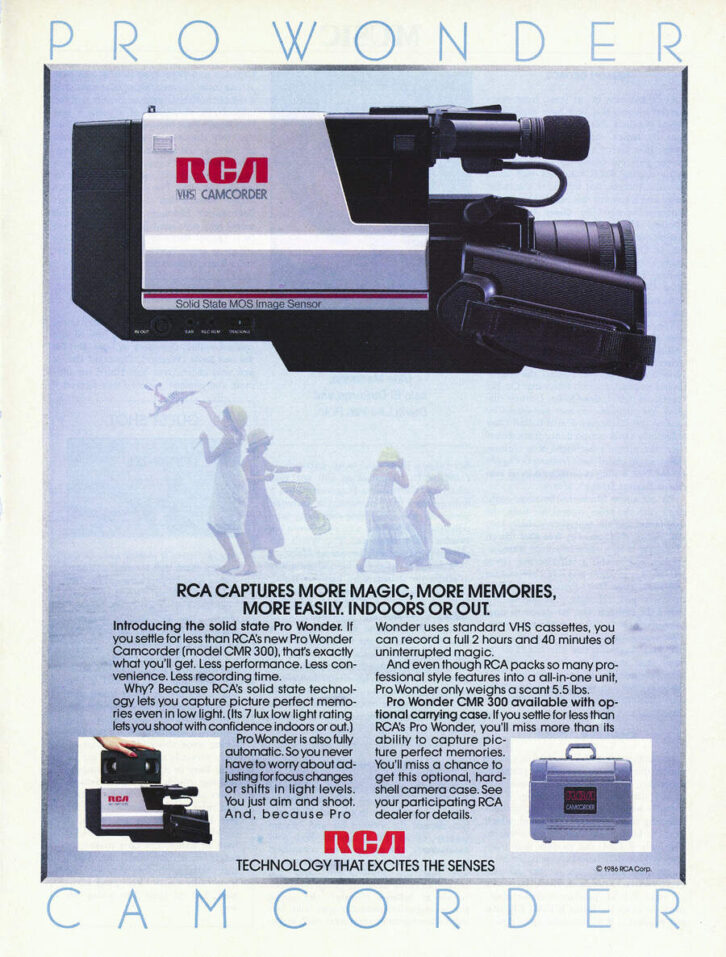
A tumultuous 10 years later, added to this limited list was the VCR, the camcorder and the whole home video revolution, personal audio players led by the Walkman, the personal computer, video games, CB radio, and an entire car audio industry (which I apologize for not covering more extensively – or at all), home telephones, and cellular telephones, all accompanied by supply chains that now featured legal steps, and a new way of marketing and selling new, previously unknown tech.
The next 10 years would see not only the growth and maturation of these new products, but also the introduction of arguably more disruptive tech such as the Internet, and the growing importance of the legal, legislative, industry standards, and government policy aspects of new technology development.
The subsequent 10 years also would see multiple changes in industry leadership – which companies would fade or rise, which technologies would come to dominate store shelves, which countries would begin to assert themselves, and how the industry itself would declare its own independence under new leadership.
Stay tuned.
Significant Dates:
1975
- The first personal computer, the Altair 8800, appears on the cover of the January issue of Popular Electronics. (January)
- Microsoft is co-founded by Bill Gates and Paul Allen. (April 4)
- IBM’s 3800 Model 1, the first laser printer, is introduced. (April 15)
- The first Betamax VCR, the Sony SL-6300, goes on sale. (May 10)
- C.W. McCall’s “Convoy” released, exemplifies height of 1970s CB radio craze. (November)
- The Atari “Pong” home video game is introduced. (December)
- Kodak’s Steve Sasson builds the first digital camera. (December)
1976
- The inkjet printer, the IBM 4640, is developed.
- Apple Computer is founded by Steve Jobs and Steve Wozniak. (April 1)
- The first microprocessor videogame system, the Fairchild Semiconductor Video Entertainment System (VES), or Channel F, goes on sale. (November)
1977
- Apple Computer introduces the Apple II, the first mass-market personal computer. (April 16)
- Vidstar – aka VHS (Video Home System) – a video cassette platform, introduced by JVC at Summer CES. (June 4)
- Tandy announces the TRS-80, the first mass-produced personal computer. (August 3)
- The RCA SelectaVision VBT-200, the first VHS VCR, is introduced; goes on sale in October. (August 23)
- Andre Blay of Magnetic Video starts selling 50 movie titles it had licensed from 20th Century Fox on videocassette. (October)
- The first interactive TV system, QUBE, debuts. (December 1)
- The first videocassette rental store, George Atkinson’s Video Station, opens in LA. (December)
1978
- Noel Lee founds Monster Cable in Brisbane, CA.
- The Winter Consumer Electronics Show (CES) is held in Las Vegas for the first time. (January 5-8)
- The first Internet computerized bulletin board system goes live in Chicago. (February 16)
- NAVSTAR, the first satellite Global Positioning System (GPS), launches. (February 22)
- Magnavox Magnavision VH-8000, the first laserdisc player, goes on sale. (December 15)
1979
- The first portable language translators, the Lexicon LK-3000 and the Craig M100, are introduced.
- The Institute of High Fidelity (IHF) merges into the Electronic Industries Association (EIA).
- Sony introduces the Walkman TPS-L2, the first personal music player, in Japan. (July 1)
- CompuServe, the first consumer online service, launches. (September 24) .
- VisiCalc (VISIble CALCulator), the first spreadsheet program, goes on sale. (November)
1980
- The Group 3 international fax standard to ensure compatibility with digital devices is established.
- Closed-captioning decoders are sold. (March)
- “Red Book” defining CD standard released by Philips and Sony. (June).
1981
- The first U.S. public demonstration of HDTV is done by Japan’s NHK network. (February 6-7)
- RCA launches SelectaVision CED phonograph-like videodisc. (March 22)
- Osborne 1, the first commercially successful “portable” PC, goes on sale. (April 3)
- The first integrated PC mouse introduced with the Xerox Star workstation. (April 27)
- The IBM PC, using Microsoft’s Disk Operating System (MSDOS), is introduced. (August 12)
1982
- Dolby Laboratories introduces surround sound for home use.
- Advanced Television Systems Committee (ATSC) is formed.
- The GSM cell phone standard is established in Europe.
- The FCC allows market to define AM stereo broadcast standard. (March 18)
- The first rear-projection TV sets (RPTV) are sold in the U.S.
- JVC introduces VHS-C videotape format (first called UCM, then Mini-VHS). (June 1)
- Sony begins selling the CDP-101, the first compact disc (CD) player, in Japan. (October 1)
- Time Magazine names the personal computer as its “Man” of the Year, the magazine’s first non-human choice. (December 26)
1983
- 8mm video format standards are set.
- Hi-Fi VCRs are introduced.
- The first camcorder, Sony Betamovie, debuts. (January 6)
- Apple’s Lisa, the first computer using a graphical user interface (GUI) and a mouse, is unveiled. (January 19)
- Minneapolis-based music retailer Sound of Music expands into video, changes name to Best Buy. (February)
- The first digital signal-processing chip (DSP) is announced by Texas Instruments. (April 8)
- Casio TV-10, the first portable LCD TV, a black & model with a 2.7-inch screen, is sold. (June)
- Cellular telephone service is introduced in Chicago. (October 12)
- Bill Gates unveils the Windows operating system for PC. (November 10)
1984
- The first color TVs with all-digital signal processing circuitry are marketed.
- First preliminary CD-ROM format developed by Sony and Denon is introduced.
- First working 3D printer is built by Charles Hill of 3D Systems; first competing “stereolithography” patents filed.
- Federal courts break up AT&T. (January 1)
- Kodak, GE and RCA announce first 8mm camcorders. (January)
- The U.S. Supreme Court rules home videotaping legal. (January 17)
- Apple’s Macintosh, the first home computer with a graphic user interface (GUI) goes on sale. (January 24)
- Internet online service provider Prodigy founded as Trintex. (February 13)
- Research In Motion – BlackBerry – co-founded by Mike Lazaridis. (March 7)
- The Motorola DynaTAC 8000X, the first commercially available cellular phone, goes on sale in Chicago. (March 13)
- RCA ends failed SelectaVision CED phonograph-like videodisc project; loses $580 million, which cripples the company. (April 4)
- The first working car CD player system debuts at the Summer CES. (June 3-6)
- Epson’s ET-10, aka Seiko T102, the first portable color LCD TV, is sold. (August)
1985
- Internet online services company Quantum Computer Services, which will change its name to America Online (AOL), founded. (May 24)
- Magellan NAV-1000, the first portable GPS, ships. (May 25)
- Mitsubishi unveils first 35-inch TV at Summer CES. (June 2).
- Qualcomm founded in San Diego. (July 1)
- Steve Jobs fired from Apple. (September 16)
- Nintendo releases its Nintendo Entertainment System (NES) videogame platform, which reinvigorates the videogame industry. (October 18)
- The first Blockbuster video store opens, in Dallas, TX. (October 19)
- Microsoft Windows v1.0 PC operating system released. (November 20)
- GE buys RCA. (December 12)
See also: CTA Centennial Part 5d: A Decade of Disruption – 1984 ‘Phones It In’





